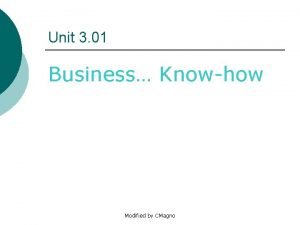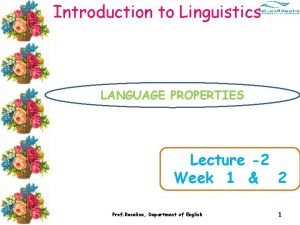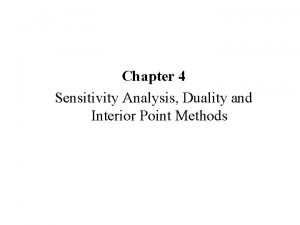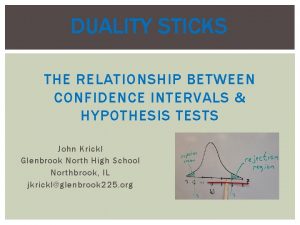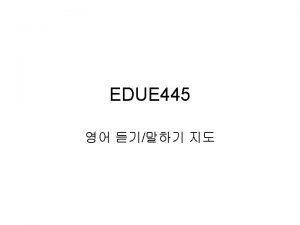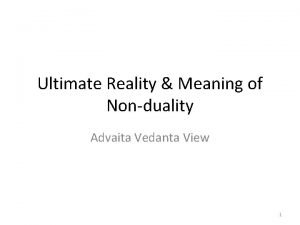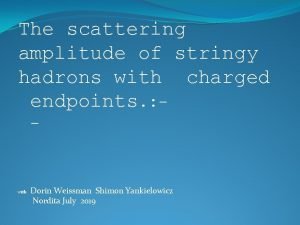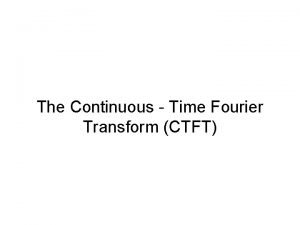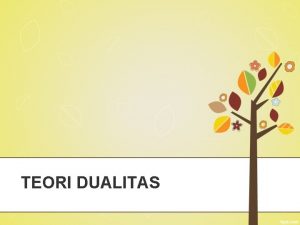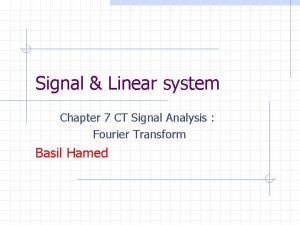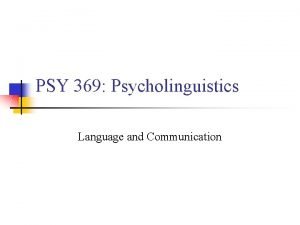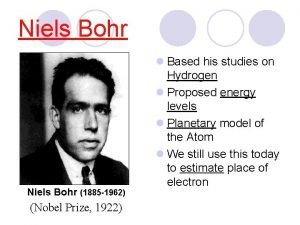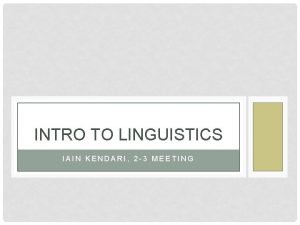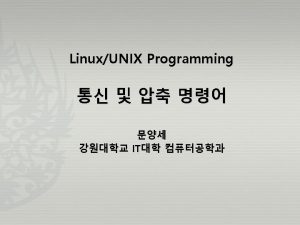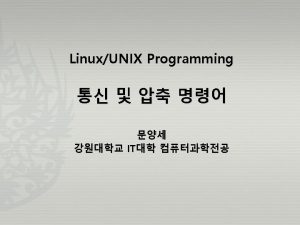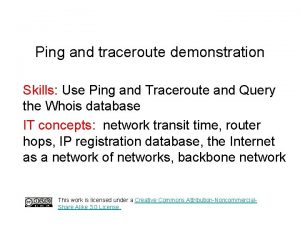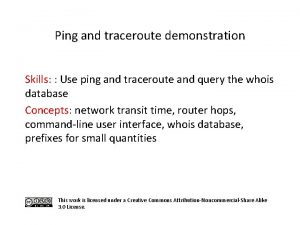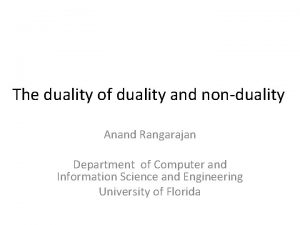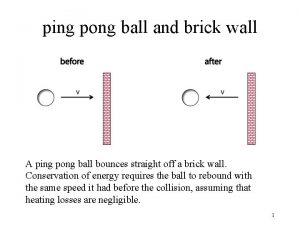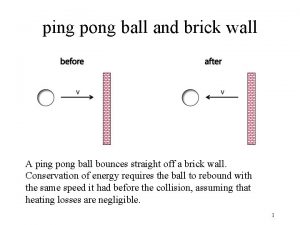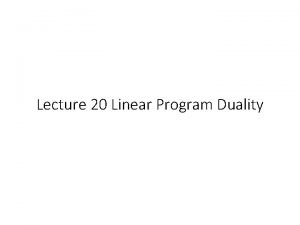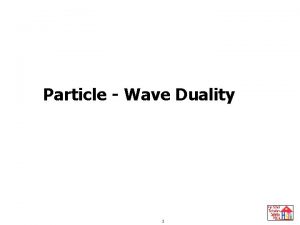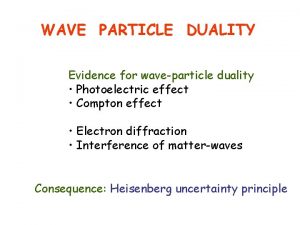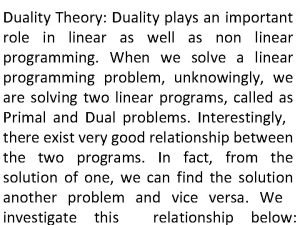Peter Ping Li The Duality of Knowhow and



![Two Dimensions Resource Configuration 李平 Peter Ping Li [Resource-based View] 加州州立大学商学院管理系 终身正教授 vs. Resource Two Dimensions Resource Configuration 李平 Peter Ping Li [Resource-based View] 加州州立大学商学院管理系 终身正教授 vs. Resource](https://slidetodoc.com/presentation_image_h2/5488cd84c0adb5008bf713506b10d0a7/image-4.jpg)





![Know-Who as Informal Option Temporal: Sequential Options [deferral & growth options] Task People Spatial: Know-Who as Informal Option Temporal: Sequential Options [deferral & growth options] Task People Spatial:](https://slidetodoc.com/presentation_image_h2/5488cd84c0adb5008bf713506b10d0a7/image-10.jpg)
![Know-Who as Informal Option Dyadic Level: Tie strength [Strong tie vs. Weak tie] Relational Know-Who as Informal Option Dyadic Level: Tie strength [Strong tie vs. Weak tie] Relational](https://slidetodoc.com/presentation_image_h2/5488cd84c0adb5008bf713506b10d0a7/image-11.jpg)







- Slides: 18

Peter Ping Li The Duality of Know-how and Know-who Peter Ping Li Copenhagen Business School May 2015

The st 1 Problem The Need for a Complete Theory 李平of Peterthe Ping Li Firm: 加州州立大学商学院管理系 终身正教授 Firm’s boundary/scope is often mixed up with firm’s governance mode

The nd 2 Problem The Need for a Complete Theory 李平 of. Peter Knowledge: Ping Li 加州州立大学商学院管理系 终身正教授 Technical knowledge is overemphasized at the expense of social knowledge
![Two Dimensions Resource Configuration 李平 Peter Ping Li Resourcebased View 加州州立大学商学院管理系 终身正教授 vs Resource Two Dimensions Resource Configuration 李平 Peter Ping Li [Resource-based View] 加州州立大学商学院管理系 终身正教授 vs. Resource](https://slidetodoc.com/presentation_image_h2/5488cd84c0adb5008bf713506b10d0a7/image-4.jpg)
Two Dimensions Resource Configuration 李平 Peter Ping Li [Resource-based View] 加州州立大学商学院管理系 终身正教授 vs. Resource Coordination [Transaction Cost View]

Four Components Resource Configuration Narrow focus for specialization 李平 Peter Ping Li 加州州立大学商学院管理系 Broad option终身正教授 for diversification Resource Coordination Formal control for compliance Informal trust for commitment

TCE & RBV Biases TCE: Cost reduction for each transaction event 李平 Peter Ping Li 加州州立大学商学院管理系 终身正教授 RBV: Intra-firm value creation via resource bundles KBV: Intra-firm value creation via shared identity & routines

Transaction Value Lens TVL: Inter-firm joint value creation due to a portfolio of options for an 李平 Peter Ping Li privileged access [social capital & trust) 加州州立大学商学院管理系 终身正教授 to others’ diverse resources [derived from the specialized focus of each] The access serves as strong bridges to connect firms as diverse islands

Formal & Informal Knowledge Application of TVL to Knowledge 李平 Peter Ping Li 加州州立大学商学院管理系 终身正教授 Technical Know-how [for island] [Task, stock, narrow & similar knowledge] Social Know-who [for bridge] [Awareness & Access to distributed know-how] [People, flow, broad & diverse knowledge]

Know-How & Know-Who IQ/rational EQ/emotional Task People Exploitation Exploration MQ/moral
![KnowWho as Informal Option Temporal Sequential Options deferral growth options Task People Spatial Know-Who as Informal Option Temporal: Sequential Options [deferral & growth options] Task People Spatial:](https://slidetodoc.com/presentation_image_h2/5488cd84c0adb5008bf713506b10d0a7/image-10.jpg)
Know-Who as Informal Option Temporal: Sequential Options [deferral & growth options] Task People Spatial: Simultaneous Options [versatile & Novel options]
![KnowWho as Informal Option Dyadic Level Tie strength Strong tie vs Weak tie Relational Know-Who as Informal Option Dyadic Level: Tie strength [Strong tie vs. Weak tie] Relational](https://slidetodoc.com/presentation_image_h2/5488cd84c0adb5008bf713506b10d0a7/image-11.jpg)
Know-Who as Informal Option Dyadic Level: Tie strength [Strong tie vs. Weak tie] Relational Embeddedness Dyad Network Level: Portfolio Structure [Diverse statuses & Dense links] Structural Embeddedness

Know-Who & AC Technical Know-how Social Know-who New Absorptive Capacity (AC) Traditional AC focuses on know-how, while I integrates know-how with know-who beyond the relational AC

Know-Who & E-E Know-how for Exploitation: Path-dependent Narrow & deep Intra-firm learning Know-who for Exploration: Path-breaking Broad & diverse Inter-firm learning

Know-Who & Alliance 1 Ex Ante SA Content Design: Know-how Configuration Ex Post SA Process Execution: Know-who Coordination

Know-Who & Alliance 2 Each Island Emphasizing Current Core for Exploitation Bridge Portfolio Emphasizing New Core for Exploration

Framework of SA Learning Antecedent: Theory of the Firm Mediation: Knowledge Consequence: Learning Trust [Informal] External Coord. to Enhance Harmony Know-Who Bridge of Diversification & Novelty Exploration Path-Breaking Learning Option [Broad] Island of Specialization & Standardization Spatial Interplay Control [Formal] Internal Coord. to Reduce Conflict Know-How Temporal Interplay Internal Configuration for Unity Cross-level Awareness Focus [Narrow] Cross-level Access External Configuration for Diversity Exploitation Path-Dependent Learning

Semi-Formal Organization Formal Elements: Path-dependent Narrow & deep Intra-firm learning Informal Elements: Path-breaking Broad & diverse Inter-firm learning

Yin-Yang Balancing Social Issues: Most Paradoxes and Dualities Yang: Path-dependent Narrow & deep Intra-firm learning Yin: Path-breaking Broad & diverse Inter-firm learning
 Knowledge and knowhow
Knowledge and knowhow Knowhow
Knowhow Unit 3
Unit 3 Peter ping li
Peter ping li Duality property of language
Duality property of language Sensitivity analysis and duality
Sensitivity analysis and duality Duality of confidence interval and hypothesis test
Duality of confidence interval and hypothesis test Setting of dr. jekyll and mr. hyde
Setting of dr. jekyll and mr. hyde Double articulation
Double articulation Wave particle duality questions
Wave particle duality questions Non duality meaning
Non duality meaning Holographic duality theory
Holographic duality theory Duality memory locations
Duality memory locations Ctft properties
Ctft properties Persoalan dualitas
Persoalan dualitas Rect(t-1/2)
Rect(t-1/2) What is communication
What is communication Niels bohr analogy
Niels bohr analogy Arbitrary in linguistics
Arbitrary in linguistics


